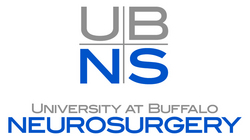SBIR PHASE II: A BLOOD-BASED TEST TO IDENTIFY PATIENTS WITH INTRACRANIAL ANEURYSM
The broader/commercial impact of this SBIR Phase II project aims to validate and test a novel blood-based diagnostic to detect unruptured brain aneurysms in asymptomatic patients. In the U.S., approximately 2-5% of the population (about 6-17 million Americans) harbors an unruptured brain aneurysm. Since aneurysms are largely asymptomatic, these individuals are unaware of the potential danger they are in. Currently, there are no adequate screening tools to identify an unruptured intracranial aneurysm (IA). As a result, ~30,000 Americans suffer aneurysm rupture each year without warning, 10-15% of whom die on the way to the hospital and another 30-40% of whom die within a month. The novel diagnostic screening test to be validated in this project will provide a means to identify people who have unruptured aneurysms, enabling patients to be monitored and receive life-saving preventative treatments. In addition to the health benefits of this non-invasive test, it will also result in massive savings for the healthcare system. The estimated lifetime healthcare costs for annual cases of patients with ruptured IA is about $3 billion, and more than $885 million for patients with unruptured IAs. Plus, the annual lost wages of surviving ruptured IA patients and their caretakers combined is an estimated $138 million.
This project aims to validate a molecular diagnostic to detect biomarkers of unruptured aneurysms consisting of genes expressed in circulating whole blood. Our Phase I and Post-Phase I study results have shown that a panel of approximately 50 circulating RNAs isolated from blood samples can be used to predict the presence of unruptured brain aneurysms with over 90% accuracy. Since Phase I, analysis of these RNA biomarkers has been transferred and verified on a clinical diagnostic platform that uses patented chemical ligation-dependent probe amplification technology, standard qPCR amplification, and capillary electrophoresis for readout. This Phase II project will be the first large-scale validation of this test, utilizing blood samples from 400 patients with and without aneurysms across 3 clinical centers to reliably assess the diagnostic’s accuracy. Next-generation sequencing on the first half of patients will be used as a second verification of the platform and to select new emergent biomarkers if needed. Predictive accuracy of 90% with an AUC greater than 0.80 will be used to measure success. Furthermore, the last half of the samples will be tested in a CLIA-certified lab in order to prepare the test for launch as a Lab Developed Test following Phase II.
This award reflects NSF’s statutory mission and has been deemed worthy of support through evaluation using the Foundation’s intellectual merit and broader impacts review criteria.
More about this report at: Original Source





